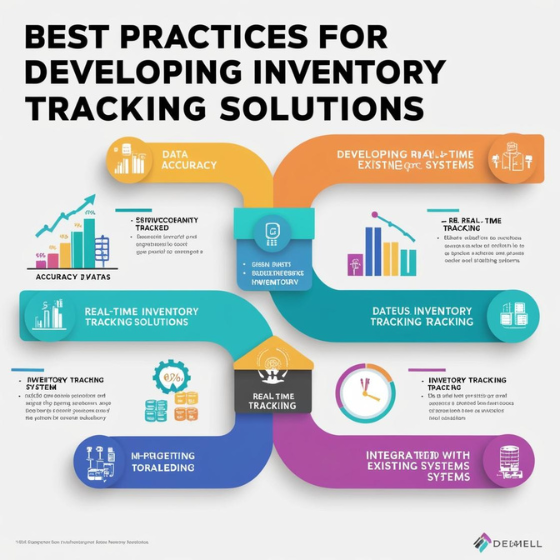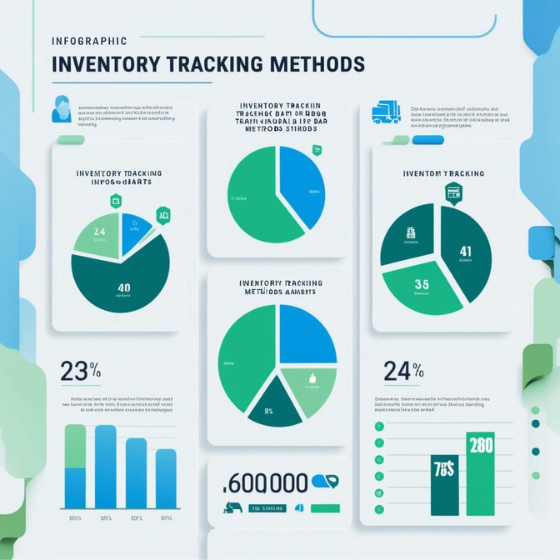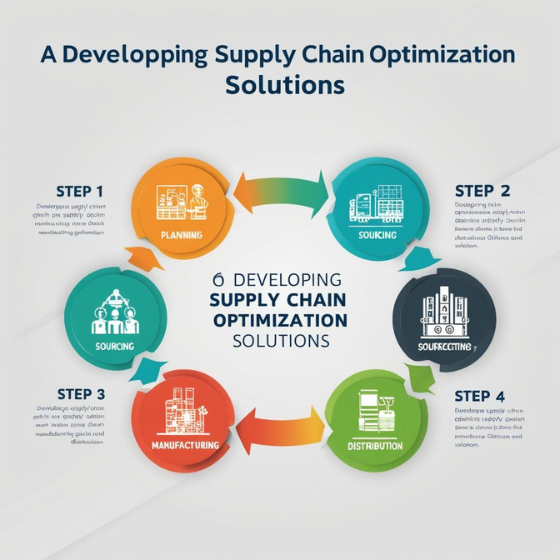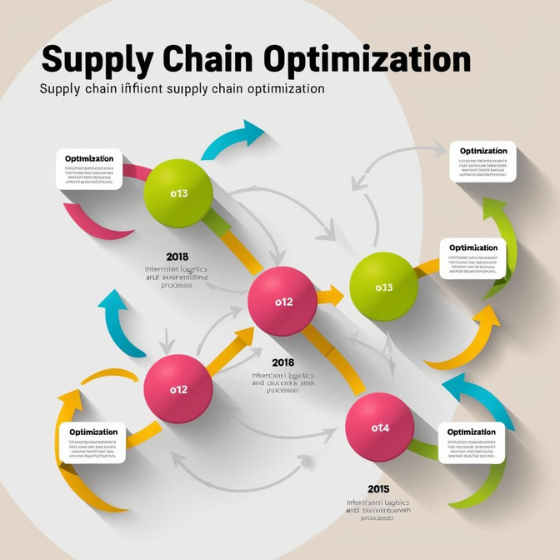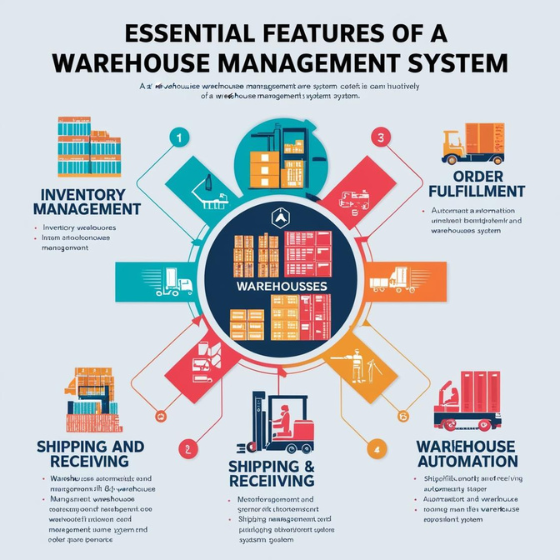Best Practices for Developing Inventory Tracking Solutions: Optimizing Your Business Operations
Inventory management is one of the most critical aspects of running a successful business. Whether you’re in retail, e-commerce, or manufacturing, having a robust inventory tracking solution can help ensure that your operations run smoothly and efficiently. In fact, studies have shown that businesses with effective inventory management systems can reduce costs by up to 25% and improve overall operational efficiency. But how do you go about developing an inventory tracking system that suits your specific needs?
In this blog, we’ll explore the best practices for developing inventory tracking solutions that not only streamline your processes but also reduce errors and improve customer satisfaction. We’ll cover the essential features to include, key technological considerations, and how to make your solution scalable for future growth. Whether you’re a startup looking to develop an in-house solution or a large enterprise in need of a more advanced system, this guide will provide valuable insights.
What Are Inventory Tracking Solutions?
Before diving into the best practices, it’s important to understand what inventory tracking solutions are and why they’re crucial for business success. Inventory tracking solutions are software systems that help businesses monitor and manage their inventory in real-time. These systems typically offer features such as barcode scanning, stock level monitoring, order tracking, and integration with other business tools like ERP (Enterprise Resource Planning) systems.
The primary goal of an inventory tracking solution is to provide accurate, up-to-date information about stock levels, product locations, and order status. This enables businesses to optimize their operations, reduce waste, and improve customer service by ensuring they have the right products available at the right time.
Best Practices for Developing Inventory Tracking Solutions
Developing a custom inventory tracking solution can be a daunting task. However, by following best practices, you can create a solution that meets your business’s unique needs and scales as your company grows. Here are the top best practices for developing inventory tracking solutions:
1. Understand Your Business Needs
Before you begin developing your inventory tracking solution, it’s essential to thoroughly understand your business requirements. Ask yourself questions like:
- What type of products are you tracking?
- How many locations need to be included in the system?
- Will the system integrate with other tools (e.g., accounting, CRM)?
- What level of reporting and analytics do you need?
By clearly defining your needs, you can ensure that the solution is tailored to your specific business operations. An effective inventory tracking solution should be able to handle various business complexities, from small-scale operations to large-scale distribution networks.
2. Choose the Right Technology Stack
When developing an inventory tracking solution, selecting the right technology stack is crucial. The tech stack should be scalable, secure, and able to integrate with your existing business tools. Some key technologies to consider include:
- Cloud-Based Solutions: Cloud-based inventory tracking systems offer flexibility and scalability. They allow your team to access the system from anywhere, which is particularly useful if you have multiple warehouses or remote teams.
- Barcode Scanning: Incorporating barcode scanning functionality is one of the best practices for developing inventory tracking solutions. It helps ensure real-time tracking, minimizes human error, and accelerates data entry processes.
- Integration with ERP/CRM Systems: Seamless integration with other business tools is crucial for efficient operations. An integrated solution ensures that your inventory data flows smoothly across departments and prevents discrepancies.
The technology you choose should be reliable and capable of supporting your business as it grows. At Sodio, we specialize in developing custom inventory tracking solutions that use the latest technologies to ensure your business stays ahead of the curve. Check out our custom software development services to learn more.
3. Implement Real-Time Tracking Features
One of the most important aspects of an effective inventory tracking solution is real-time tracking. This feature ensures that you always have accurate, up-to-date data on stock levels, order statuses, and product locations. By using technologies such as RFID (Radio Frequency Identification) or barcode scanning, you can track products as they move through the supply chain, from the warehouse to the customer’s doorstep.
Real-time tracking can help reduce errors, prevent stockouts, and improve the overall efficiency of your operations. It also enhances customer satisfaction by providing accurate delivery timelines and product availability.
4. Focus on User-Friendly Design
While powerful features and complex integrations are essential for an effective inventory tracking system, it’s equally important to ensure that the system is easy to use. A complicated interface can lead to user errors and slow down your operations.
When developing an inventory tracking solution, prioritize usability by ensuring the system is intuitive and easy for your team to navigate. This can be achieved by:
- Simplifying the user interface (UI)
- Providing clear navigation options
- Offering mobile compatibility for teams on the go
By designing a user-friendly system, you can enhance adoption rates and minimize training time for your team.
5. Ensure Scalability
Your business is likely to grow over time, so it’s essential that your inventory tracking solution is scalable. A scalable system can handle increased inventory levels, more locations, and more complex workflows as your business expands. It should also be flexible enough to integrate with new tools and technologies that may be added down the road.
Investing in a scalable inventory tracking system today ensures that you won’t need to overhaul your entire system in the future. As your business needs change, the solution can grow with you, saving time and resources.
6. Prioritize Security and Data Privacy
Security is a critical consideration when developing an inventory tracking solution. Your inventory data is valuable and must be protected from cyber threats and unauthorized access. Implement best practices for data security, including:
- Encryption: Ensure that data is encrypted both in transit and at rest.
- User Access Control: Set up user roles and permissions to control who has access to sensitive information.
- Regular Security Audits: Conduct regular security audits and vulnerability assessments to identify and mitigate risks.
A secure inventory tracking system will protect your business from data breaches and ensure compliance with industry regulations.
7. Automate Reporting and Analytics
Another best practice for developing inventory tracking solutions is incorporating automation for reporting and analytics. An effective solution should automatically generate real-time reports on inventory levels, stock movement, and order statuses. These reports can provide valuable insights into:
- Trends in inventory turnover
- Which products are performing well and which aren’t
- Potential supply chain disruptions
By automating this process, you save time on manual reporting and gain actionable insights that can drive business decisions. Automation also minimizes errors and ensures that your data is always accurate and up-to-date.
How to Get Started with Inventory Tracking Solutions
Now that you know the best practices for developing inventory tracking solutions, the next step is to take action. If you’re ready to improve your business’s inventory management system, here’s how you can get started:
- Consult with Experts: Work with a software development team that specializes in inventory tracking systems. They can help you assess your business’s needs and build a custom solution tailored to your goals.
- Choose a Solution Provider: At Sodio, we offer end-to-end development services to help businesses create efficient and scalable inventory tracking solutions. Visit our custom software development page to explore how we can help.
- Pilot Your Solution: Once your inventory tracking system is developed, conduct a pilot test to ensure everything works as expected. Make necessary adjustments based on feedback before launching the system across your entire organization.
Conclusion
Developing a custom inventory tracking solution is a game-changer for businesses looking to optimize their operations and improve efficiency. By following the best practices outlined in this blog, you can create a system that reduces errors, streamlines processes, and enhances customer satisfaction. From understanding your business needs to ensuring scalability and security, these practices will help you build a solution that can grow with your business.
If you’re looking to implement an effective inventory tracking system for your business, get in touch with Sodio’s expert team today. We offer custom software development services tailored to your needs and can help you develop a solution that supports your business’s growth. Explore our services page to learn more and get started today.
